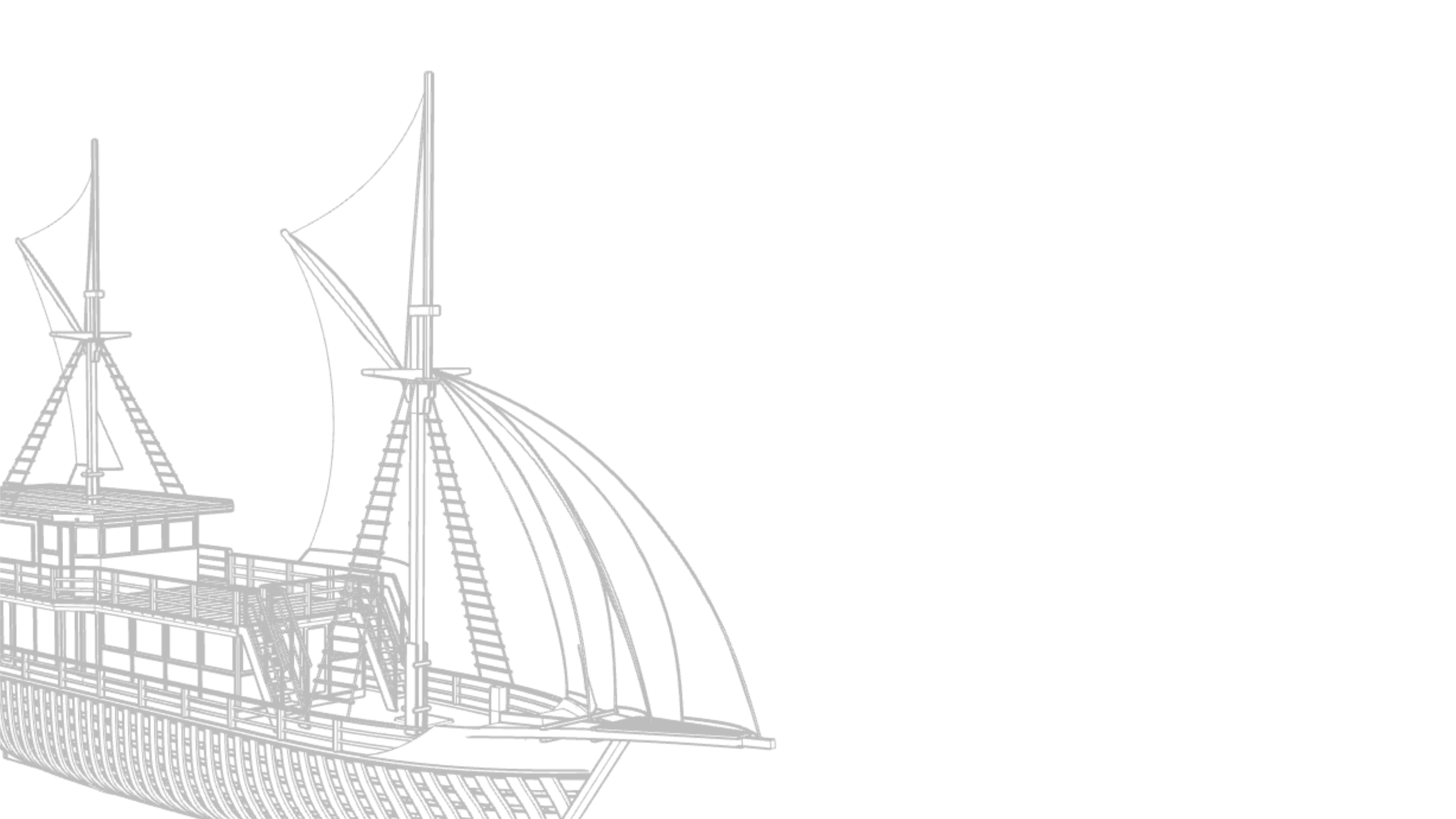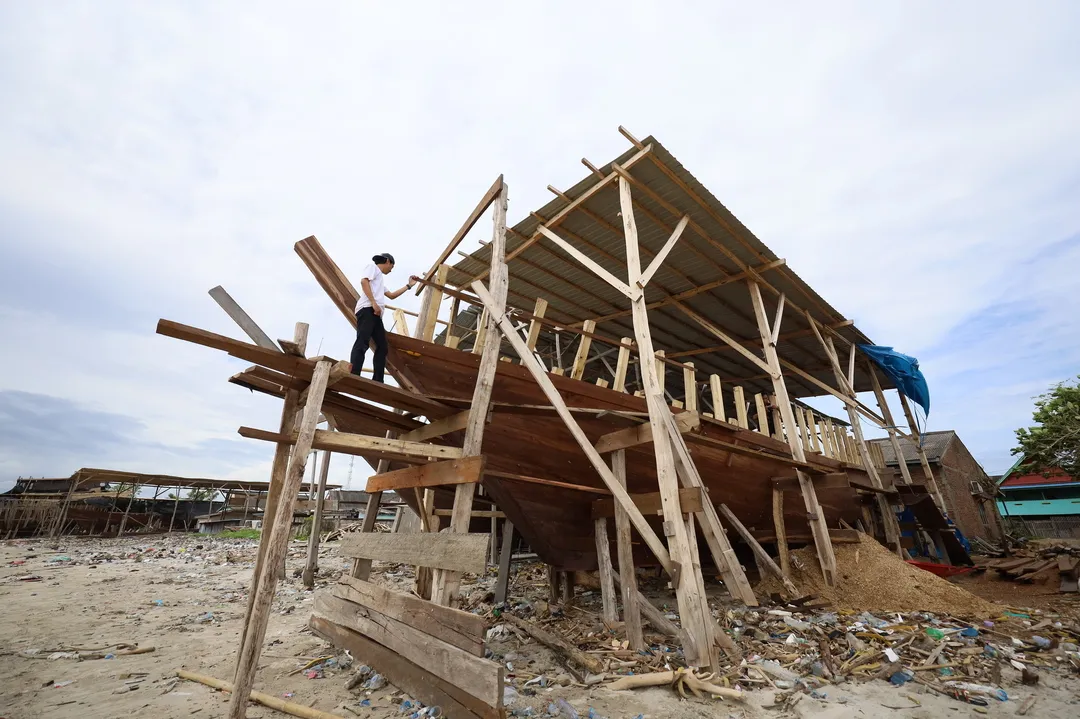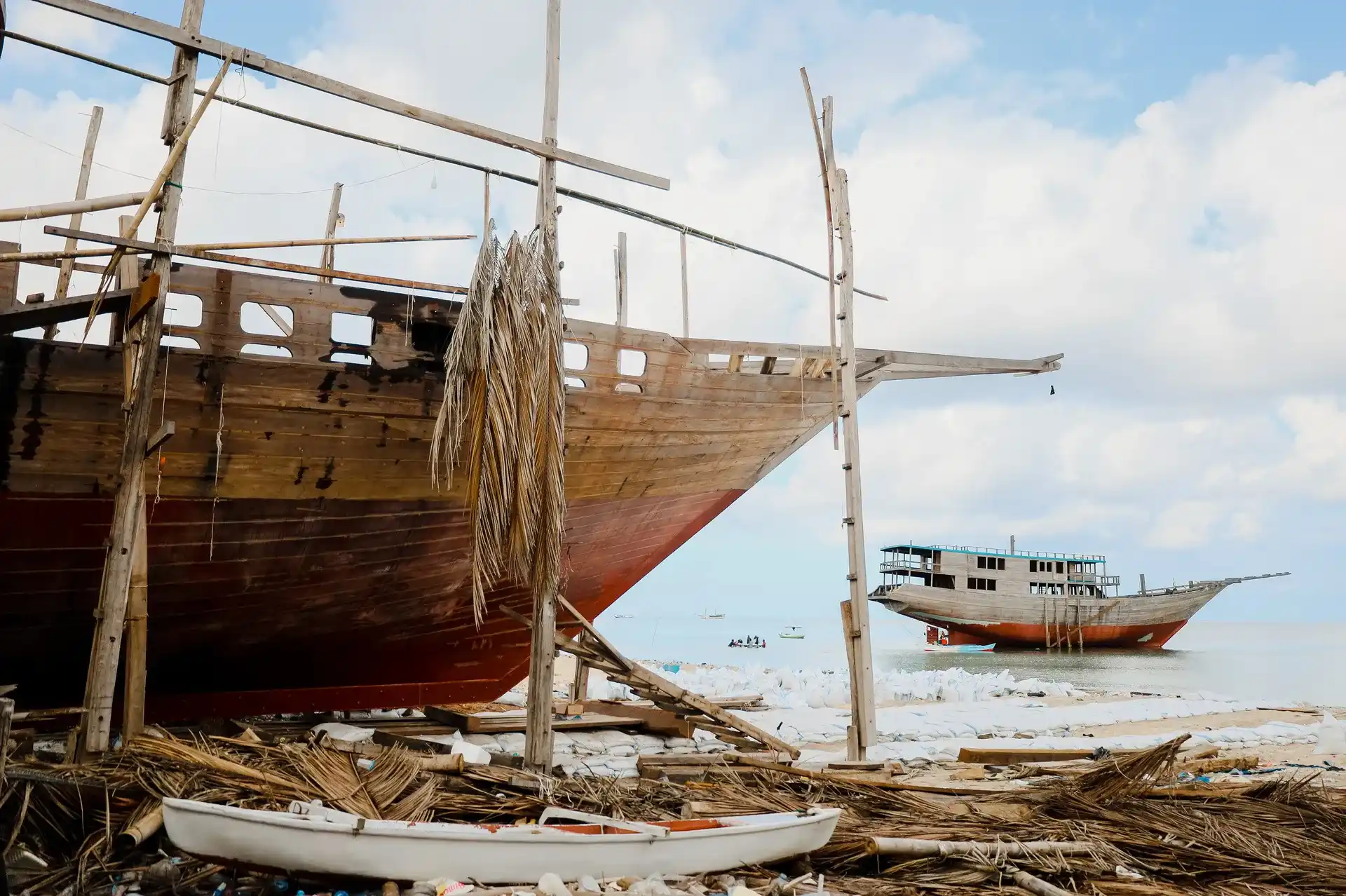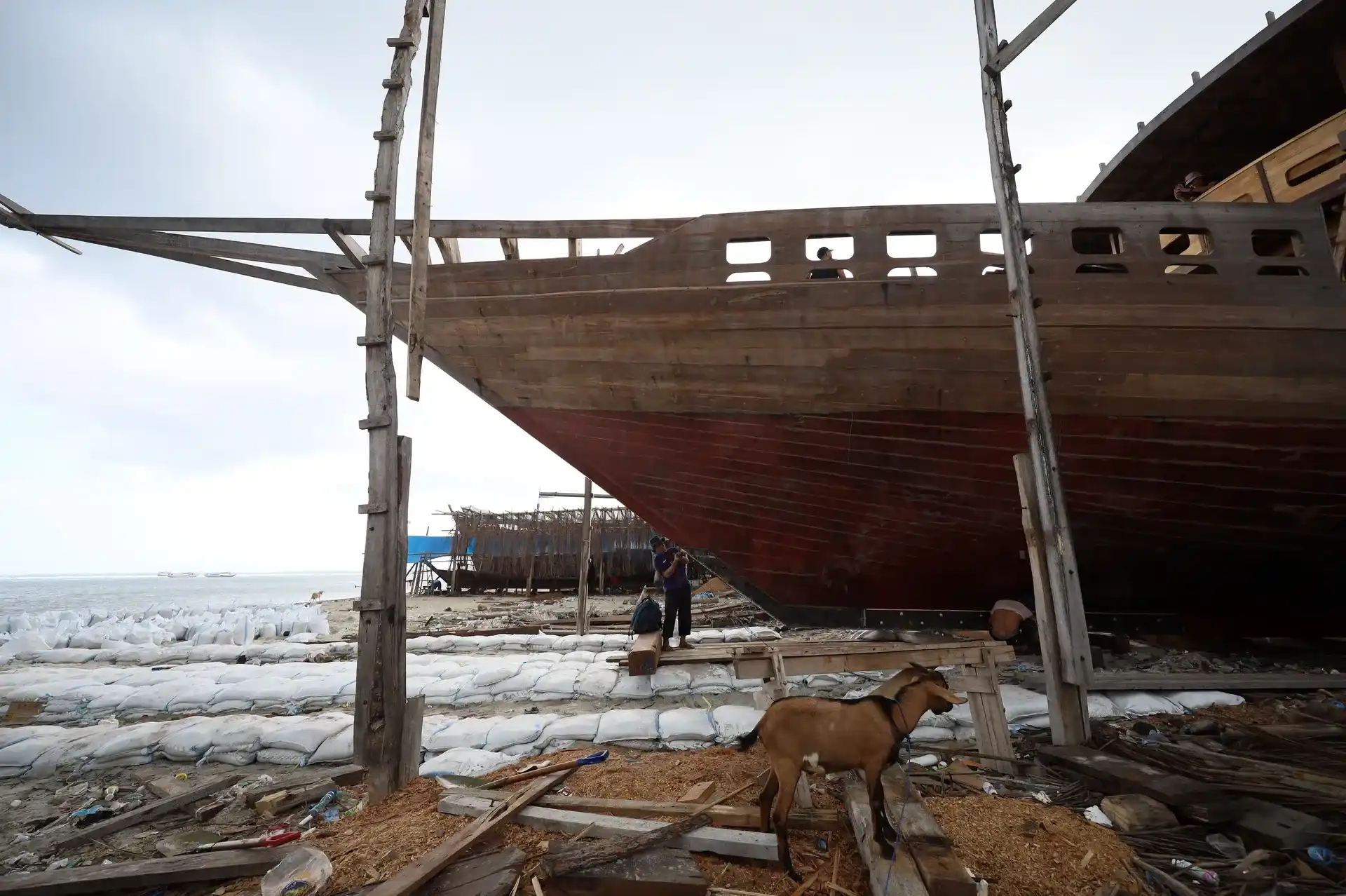How Wooden Boats Are Made in Indonesia: A Step-by-Step Look at a Living Tradition
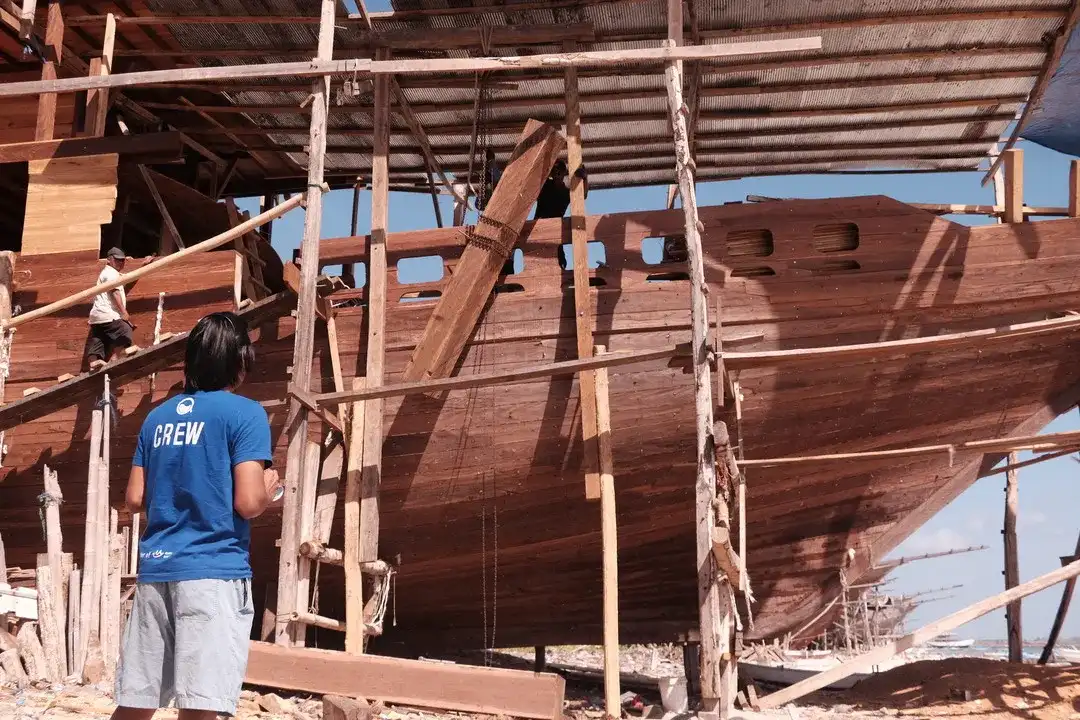
How wooden boats are made in Indonesia reflects a deep cultural tradition where craftsmanship, community, and the sea meet. From the iconic Phinisi ships to smaller wooden vessels across the archipelago, these boats are built by hand, guided by generations of skill and ritual.
Let’s explore how these vessels are shaped from forest to ocean.
What Wood is Used for Boats in Indonesia?
In Indonesia, traditional boatbuilders use several types of durable, water-resistant hardwoods that can withstand tropical climates and sea conditions. The most commonly used woods include:
1. Ironwood (Ulin / Kayu Besi)
It’s commonly sourced from South Kalimantan, Sulawesi, and Papua. Though difficult to cut, its underwater durability makes it highly valued.
Ironwood, locally known as Ulin or Kayu Besi, is a highly prized wood type in traditional Indonesian boatbuilding, especially valued for its extraordinary durability and resilience. It is exceptionally dense and hard, with a fine, smooth texture that demands skilled craftsmanship and specialized tools to work with.
This wood naturally resists termites, fungal decay, marine borers, and water damage, making it ideal for building boat parts that must withstand prolonged exposure to tropical seawater and harsh environmental conditions.
Its remarkable hardness and density give it superior strength, ensuring that boats constructed with ironwood, particularly the keels and hulls, remain structurally sound and seaworthy for decades—often lasting over 20 years submerged in saltwater and more than 100 years in contact with the soil. This longevity is highly desirable in traditional vessels like the Phinisi, where durability is crucial.
Ironwood also has a distinctive aesthetic appeal, featuring shades that range from light brown to rich reddish-brown, and eventually darkening to nearly black over time. Beyond its physical properties, ironwood holds cultural significance, symbolizing strength and protection in Indonesian maritime heritage.
2. Teak (Jati)
Teak, locally known as Jati, is one of the most highly valued wood types used in Indonesian boatbuilding due to its exceptional combination of strength, durability, and natural beauty. It is a tropical hardwood native to South and Southeast Asia, prized worldwide for its suitability in marine environments.
One of teak’s defining features is its high natural oil content, which acts as a natural barrier against moisture, termites, and fungal decay. This unique property means teak requires less maintenance compared to many other woods, making it an ideal material for areas exposed to harsh weather and constant water contact, such as boat decks and interiors.
Teak wood is dense and strong, capable of withstanding heavy wear and environmental changes without warping, cracking, or deteriorating. These properties ensure that boats built with teak components remain structurally sound and aesthetically appealing over many years.
The wood’s color ranges from golden brown to dark brown, developing a distinguished silver-gray patina with age and exposure, which adds to its luxurious appearance and is highly sought after in yacht and traditional wooden boats alike.
Besides its durability, teak is relatively easy to work with compared to other hardwoods, providing flexibility for precise shaping, cutting, and joining. This makes it excellent for crafting boat parts such as decks, flooring, cabin interiors, trims, and railings. Teak’s natural grain also provides non-slip surface characteristics, enhancing onboard safety in wet conditions.
Read Also: Anatomy of a Phinisi Ship: Inside Indonesia’s Iconic Wooden Vessel
3. Bitti Wood (Kayu Bitti)
Bitti Wood, locally known as Kayu Bitti, is a traditional wood type used especially in Phinisi boat construction in South Sulawesi, Indonesia. It is valued for being lighter than ironwood (Ulin) yet still strong and flexible, making it well suited for structural elements like frames and beams. Its relative lightness compared to other hardwoods allows boatbuilders to shape upper structures more easily without sacrificing strength and durability.
Kayu Bitti’s anatomical and physical properties include a favorable fiber proportion and density that provide sufficient mechanical strength while allowing some flexibility. This helps boats withstand stress and movement on the water, which is crucial for maintaining the structural integrity of the vessel during sailing or rough seas.
The availability of Bitti wood tends to be more limited, often coming from smaller diameter logs of younger trees found in community forests in South Sulawesi, which makes sustainable sourcing important. Despite this, it remains a preferred wood for certain parts of traditional boatbuilding because of its workability and compatibility with other woods like ironwood and teak.
In traditional maritime craftsmanship, Kayu Bitti represents a balance between durability and ease of manipulation, helping craft elegant and seaworthy boats that honor Indonesia’s rich boatbuilding heritage.
4. Merbau (Kayu Merbau)
Merbau, locally known as Kayu Merbau, is a highly durable and strong hardwood commonly used in Indonesian boatbuilding, especially for hull planks and other structural components exposed to tropical marine environments.
Merbau wood features a high density, averaging around 850 kg/m³ when seasoned, translating to excellent structural integrity and strength. This density allows it to withstand bending, pressure, and impacts, essential qualities for boat hulls that must endure rough seas and physical stress.
The wood’s grain is typically interlocked or wavy, giving it an attractive texture and unique reddish to dark brown tones that enhance the aesthetic appeal of boats. While Merbau can develop a silver-gray patina if untreated over time, with proper care, it retains its strength and rich color for decades.
Because of its versatility and durability, Merbau is not only used in boatbuilding but also widely applied in outdoor furniture, decking, and heavy construction. Its balance of toughness and beauty has made it a preferred material where long-lasting performance and weather resistance are crucial. However, it is slightly heavier and more challenging to work with than some other woods, requiring experience and specialized tools for shaping.
5. Nyatoh or Other Local Hardwoods
Shipbuilders use a range of regional woods depending on tradition. Choices reflect boat function, spiritual beliefs, and local availability. This flexibility shows the deep integration of craft and ecology.
| Wood Type | Characteristics | Common Uses in Boatbuilding | Approximate Price per Cubic Meter (USD) |
| Ironwood (Ulin) | Extremely dense, rot-resistant, durable underwater | Keels, hulls | $1,200 - $2,000 |
| Teak (Jati) | Contains natural oils, termite and moisture resistant | Decks, interiors | $800 - $1,500 |
| Bitti Wood (Kayu Bitti) | Strong, flexible, lighter than ironwood | Frames, beams, upper structures | $700 - $1,200 |
| Merbau (Kayu Merbau) | Dense, decay and marine pest resistant | Hull planks | $750 - $1,300 |
| Nyatoh and Other Local Hardwoods | Variable strength and durability depending on species | Various boat parts | $400 - $900 |
Step-by-Step: How Wooden Boats Are Made in Indonesia
The process of building a wooden boat in Indonesia blends precision craftsmanship, ancestral knowledge, and spiritual meaning. Here’s how it unfolds, step by step:
1. Selecting and Preparing the Wood
Local builders begin by choosing durable hardwoods like ironwood (ulin) or teak, known for their resistance to seawater and tropical weather.
- Timber is sourced sustainably when possible, often from nearby forests.
- Shipbuilders inspect each log by hand, guided by tradition and intuition.
- In some regions, cutting the first piece of wood is accompanied by a small ritual asking permission from nature.
2. Laying the Keel (Lunas)
The keel—called lunas in Bahasa Indonesia—is the ship’s central spine and the foundation of its balance.
- This is always the first part built, usually placed with ceremonial blessings.
- The rest of the vessel is constructed upward and outward from the keel, aligning the boat with both practical structure and spiritual grounding.
3. Building the Frame and Hull
Frames are set up to form the skeleton of the boat, giving it shape and strength.
- Unlike modern shipbuilding, most traditional boats are built without formal blueprints.
- Artisans use visual memory, measurement sticks, and body-based proportions.
- Wooden planks are secured using wooden dowels and joints—metal nails are rarely used.
4. Shaping and Smoothing the Body
With the structure in place, the boat is refined and waterproofed.
- Hand tools are used to sand, curve, and align the hull for seaworthiness.
- Builders apply natural oils or resins made from tree sap to protect the wood.
- In areas like South Sulawesi, you’ll also find ornamental carvings that reflect local identity and symbolism.
5. Constructing the Deck and Cabin
The deck and cabin space depend on the type of boat being built.
- Traditional fishing boats may keep things minimal, while Phinisi ships include cabins for passengers or tourists.
- These upper structures are usually added last, offering both function and comfort.
6. Installing the Masts and Sails
Boats like the Phinisi are known for their distinctive two-mast rigging, used to carry large triangular or gaff-rigged sails.
- Masts are hoisted into place with community help, requiring both muscle and coordination.
- Sails are stitched by hand, often from cotton or canvas, and attached using traditional knots.
7. Final Blessing and Launch
Before the boat touches water, a ceremonial launch takes place—a moment of pride for the builders and their community.
- Offerings may include rice, coconuts, incense, or chants from elders.
- It’s believed these rituals protect the vessel and its future voyages.
- The first sail is often a symbolic journey, blessed by the sea.
Read Also: 7 Types of Traditional Indonesian Boats You Can Still See Today
Tools and Materials Used in Traditional Boatbuilding
Traditional boatbuilding in Indonesia relies on manual craftsmanship, passed down through generations. Builders use time-tested tools and natural materials—many of which they make or adapt themselves.
Tools
- Axes and Adzes: Used for cutting, shaping, and smoothing large timber.
- Chisels and Gouges: Essential for precision work, especially on joints and carvings.
- Hand Drills: Used to bore holes for wooden dowels (not nails).
- Measuring Tools: Often handmade from bamboo or wood, based on body proportions.
- Rope-Twisting Tools: Used to create or mend natural fiber ropes.
In many coastal villages, these tools are handcrafted by the builders themselves, adjusted over time to fit the builder’s hand and method—making each tool as unique as the boat it helps create.
Materials
- Ironwood (Ulin), Teak, or Bitti Wood: Chosen for durability, flexibility, and seaworthiness.
- Natural Resin or Tree Sap: Used to seal and waterproof hulls, often mixed with ash or oil.
- Coconut Fiber or Cotton Rope: Used for lashing, rigging, and sails.
- Canvas or Cotton Cloth: Transformed into handmade sails for boats like the Phinisi.
These tools and materials don’t just shape the boat, they carry the fingerprints of tradition, blending human touch with environmental respect.
Where to See Wooden Boats Being Made in Indonesia?
Curious where to witness the art of traditional boatbuilding up close? Across Indonesia, some places still honor the age-old craft—welcoming Voyagers to watch, learn, and connect with maritime heritage in real time.
1. Tana Beru, Bulukumba – South Sulawesi
This village is Indonesia’s most iconic traditional shipyard, home of the Phinisi. Along its coast, builders shape massive boats entirely by hand—no blueprints needed.
Visitors can observe skilled craftsmanship passed down through generations. It’s a living heritage site, where every hammer strike tells a story.
2. Maritime Museums – Jakarta, Makassar, Ambon
Ideal for those who prefer a historical overview of seafaring life. These museums display models, maps, navigation tools, and ship replicas.
They also explain regional boat types and their cultural significance. Great for families, students, and first-time maritime explorers.
3. Riara Marine’s Shipyard – Bulukumba
Riara Marine offers an immersive look into active Phinisi construction. Voyagers can watch boats take shape and speak directly with local builders.
It’s more than sightseeing—it’s cultural preservation in progress. Hands-on, respectful, and rooted in centuries of Bugis tradition.
Read Also: The Timeless Elegance of the Indonesian Phinisi: Where Heritage Meets Luxury
Witness the Craft in Action at Riara Marine
If you want to truly understand how wooden boats are made in Indonesia, step into the shipyard—not just the story.
At Riara Marine in Bulukumba, Voyagers can witness Phinisi construction in real time, guided by the hands of master builders.
- Observe each stage of boatbuilding, from raw timber to ready-to-sail
- Learn about tools, materials, and rituals that shape every curve and sail
- Feel the spirit of tradition passed down through generations
This isn’t just craftsmanship—it’s cultural continuity. How wooden boats are made in Indonesia isn’t only a technique; it’s a living link between sea, soul, and story.
